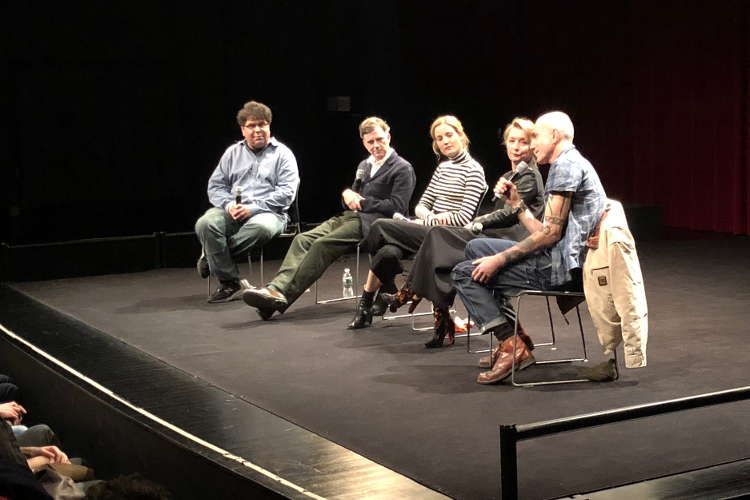The following questions and answers are excerpted from a conversation that followed the NBR screening of Phantom Thread.
What inspired you with this film and why did you set it in the world of 1950’s London fashion?
Paul Thomas Anderson: I had a thin story for a romance about a man, woman, and maybe third party. I discovered Cristóbal Balenciaga and a few different people who were great artists at making dresses, so I brought that to Daniel and it excited both of us. We started on the process of fleshing out the premise, which required a lot of writing, research and looking for good ideas. The love triangle with Alma, Cyril, and Reynolds came together by this idea of a man who was self-contained and a woman that worked with him, who was initially not the sister. Then it became interesting to have her be a sister after finding out that the men who made these dresses had their worlds run by sisters. It was great to have this character that was artistic and daydreamed about the creativity while someone else ran the nuts and bolts of their lives. Then the idea of a disrupter, in the form of romance, entering his life interested me to figure out what that would mean to everyone.
“We had no knowledge of the fashion world before this film, which made things immensely difficult.”
When you first heard about this idea, what initially excited you about the role?
Daniel Day-Lewis: The idea of the old man getting sick and what that means to the younger partner was interesting. We had difficulty thinking about what this man would be doing and we almost placed a curse on ourselves by having him make dresses to figure out what that meant. We had no knowledge of the fashion world before this film, which made things immensely difficult.
Who do you think Cyril is to her brother and what do you think she views as her job to him in this world?
Lesley Manville: Historically, this situation was prevalent (to have a woman that ran the business), but there’s something else going on with Cyril and Reynolds. They’re very tight and have this close life together to the point where they know each other inside out and have become codependent. Women have come and gone in Reyonlds’ life, leaving her to mop up the mess and mother him. Beyond that, it’s a relationship of understanding, care, and love. There’s a moment in the film where Reynolds asks for Cyril and it’s touching and worrying that this man is so dependent on this woman. It’s a happy marriage with the business because she runs the surface, leaving him to create. When Alma enters the picture, it’s a time when Cryil realizes that there’s a challenge that Reynolds needs to meet and that he needs to have a fully realized relationship with a woman that will challenge him in the way that Alma does. At first Alma is just another woman, but Cyril grows to respect her.
What do you think draws Alma to Reynolds and serves as the key of their connection?
Vicky Krieps: The key for Alma lies in the artist that Reynolds is. His passion and artistic mind is what draws her because he has this ability to be focused in what he does. She sees behind the facade into who he really is. I think she relates to him in a way that’s hidden behind all of his rules and oddities. She’s also attracted to him because he is so different as he’s in this different world.
The score by Jonny Greenwood is such an important part of the film. When did you start working together and how did that process go?
Anderson: I started working with Jonny just as early as I started working with Daniel. When Daniel and I were talking about things, I was relaying that to Jonny as we were discovering research. It was from the very beginning that Jonny had time to think about it and as we got closer, he would write piano demos so I could share with the cast so we all had these melodies as sparse piano things that were helpful.

